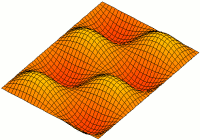Top Qs
Timeline
Chat
Perspective
Acoustic membrane
Thin vibrating layer that produces sound From Wikipedia, the free encyclopedia
Remove ads
Acoustic membranes are flexible membranes used to produce, transmit or regulate sound, ranging from the simple to complex. In musical instruments such as drums, it is the drumhead that is vibrated to produce sound; in microphones and loudspeakers, it is diaphragms and cones that transfer sound waves to and from electricity to play music and facilitate communication. Not merely a device used to produce sound, it is also used to prevent it—barium-free viscoelastic polymers such as Acoustiblok, at merely 1/8-to-1/4-inch thickness, or Tecsound 50 heavy-duty vinyl, block out their way with their energy-converting function turning over to heat to silence walls and floors. Amazing as that is, research continues to break boundaries; ultrathin self-healing membranes composed of polyborodimethylsiloxane effectively absorb low-frequency noise (200–1000 Hz) with over 95% efficiency and restore their acoustic function once injured to open new doors to construction, automotive and aerospace applications. Such versatility—from ancient drums to innovative noise confinement—testament to the manner in which the humble yet pliable acoustic membranes find their niche in developing and diverse uses.[1][2][3][4]


Remove ads
References
See also
Wikiwand - on
Seamless Wikipedia browsing. On steroids.
Remove ads
